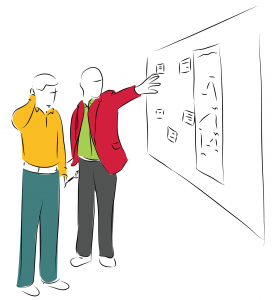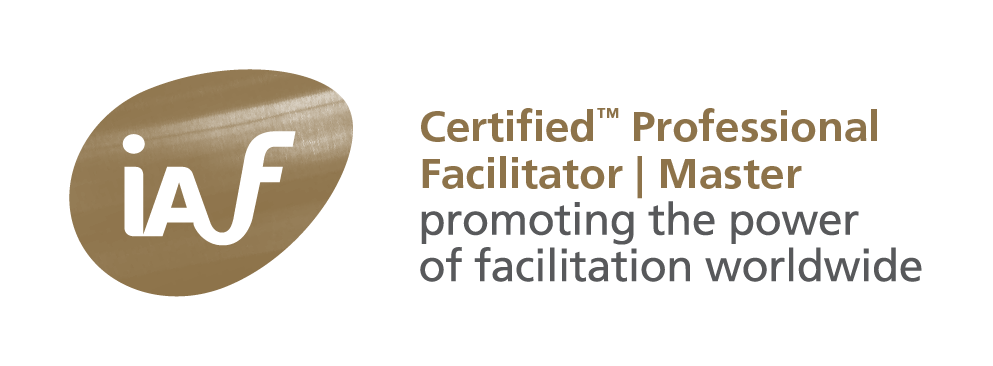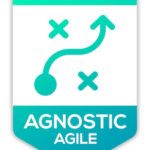 This week, I’ve visited Spilter for a training / demo of their “hybrid brainstorming” tool, computer supported brainstorming, with printing of ideas. I’ve been using this kind of “hybrid” – I don’t like the word, I prefer “blended” – brainstorming for over 15 years, pre-dating Spilter. There is no ultimate solution. I prefer using it in a same-place same-time environment. Here are some of my observations.
This week, I’ve visited Spilter for a training / demo of their “hybrid brainstorming” tool, computer supported brainstorming, with printing of ideas. I’ve been using this kind of “hybrid” – I don’t like the word, I prefer “blended” – brainstorming for over 15 years, pre-dating Spilter. There is no ultimate solution. I prefer using it in a same-place same-time environment. Here are some of my observations.
Tool for brainstorming
I see it as a tool, like pencil and (hexagonal) paper. There is however no “neutral” tool. We have a choice in intervening techniques. Pen and paper – it has been said – works better kinaesthetically. It also always works. Participants are experiencing themselves as intelligent and in control; The drawbacks are:
- hand writing (=> feeling seen personally),
- limited space (=> short, incomplete messages, single words),
- possibility of spelling errors (=> loosing face),
- messages only readable when being put up.
Mirror, mirror on the desk
A screen works both a “wall” and a “mirror”. with the use of computers, people tend to feel impressed, less intelligent and not in control. As a facilitator, one has to compensate for this. For instance, in our application (mind@work), people didn’t have to supply a given pass word; they could make up their own, just to show that they are in control and not the application.
The advantages are:
- screen offers better inner reflection (=> more complete messages, conscious messages projected on subconscious),
- spell check (=> feeling more comfortable),
- messages readable before they’re being put up (=> inspiration).
Use of a computerized tool speeds up brainstorming.
Using a projector to show the ideas enables you, as a facilitator, to tweak the brainstorm: repeating ideas, noticing incomplete messages, stimulating the brainstorm. It is harder to use it in categorizing, as it tends to be superficial, when using a screen. I think it makes sense to get the ideas out of the machine and into the social environment. “the camp fire”, I use this metaphor often: “2 million years of decision making over a camp fire is not going to be changed by 40 years of computer use”.
How to cluster?
Standing up, facing a “brown paper”, makes it easier and faster to cluster or categorize. You can work parallel, in several subgroups. The “blended” computer application made it possible to print the ideas (our application just uses a smaller font-size with longer messages) on (coloured) hexagons. I’m a big fan of hexagons, like LogoVisualTechnology (LVT).
Naming
In my experience, the crucial step in facilitating a group is in the naming of the clusters, sets or categories of the input. Here we have to slow down. This is a social, concrete process, where I need to experience the participants working together. The meaning of a message – I’ve learned this from Watzalawick – is in the interpunction: the way people say something, tone of voice, use of body..,. It is not in the content. One sentence can have different meanings, depending on the context and subtext.
Changing frame
Generally, people have difficulty in expressing what is bothering them, what the need or really want in a group (called “regression” or “group think” or … ). Here a group needs support, in a kind of “voice dialogue”, looking for the, usually more intraverted, people who are able to say what tends to remain unsaid. For instance, the initial epitome “communication” will be changed into: “we have to listen better to our customers”. In many cases, the chair person is unable to deliver this kind of support, as he or she is involved, or has a stake, in the situation.




